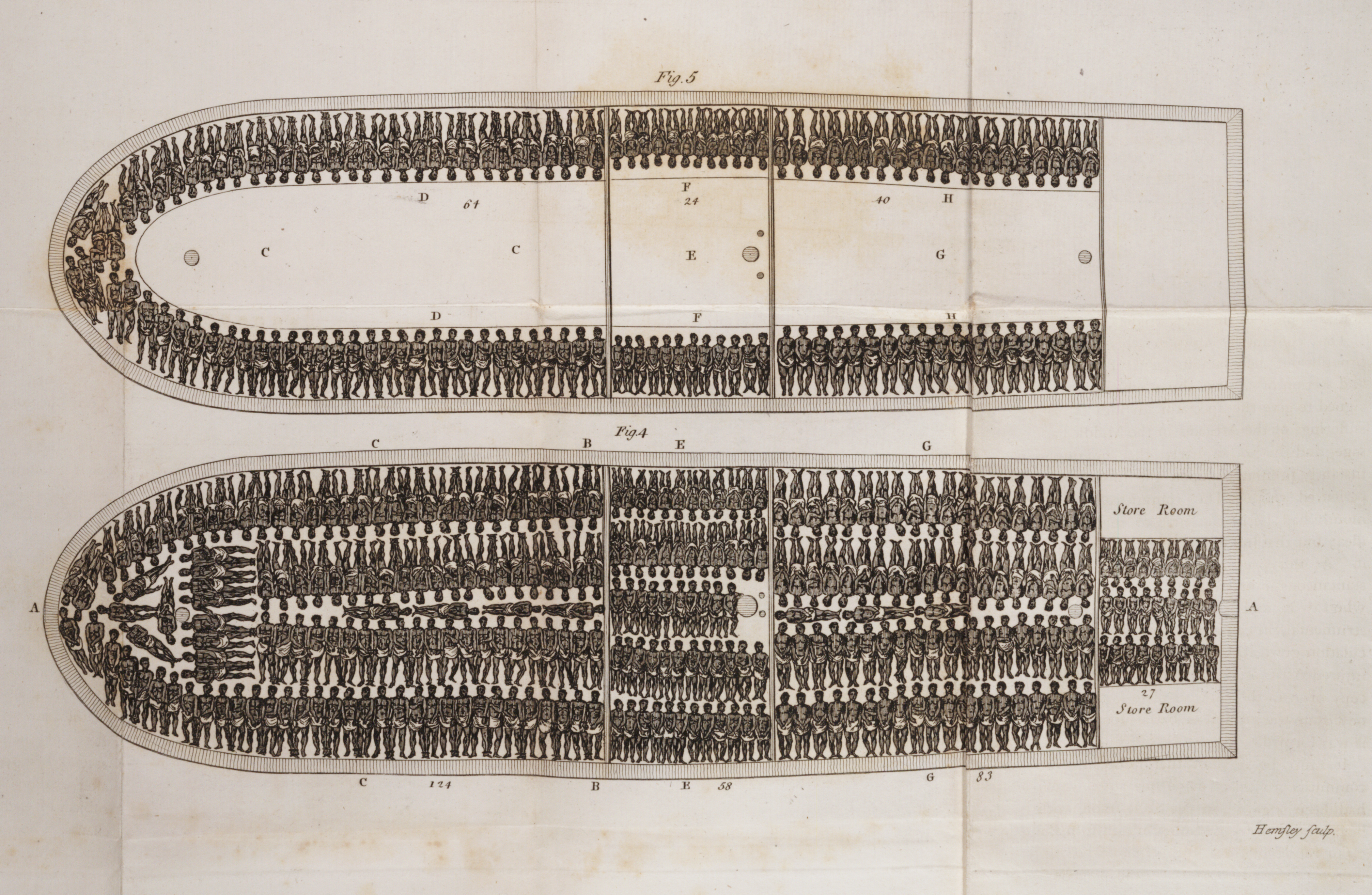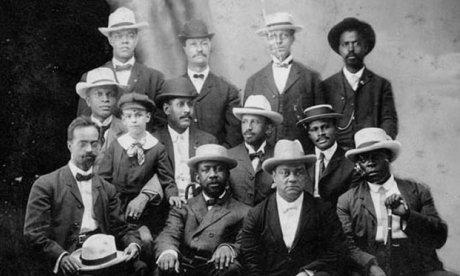ABHE Outcome 4: Articulate a broad range of knowledge
Articulate a broad range of knowledge in the natural and social sciences, humanities, and the arts as part of a well-rounded Christian life based upon a biblical worldview.
ACRL Framework: Authority is Constructed and Contextual
Define different types of authority, such as subject expertise (e.g., scholarship), societal position (e.g., public office or title), or special experience (e.g., participating in a historic event);
ACRL Framework: Information Creation as a Process
Recognize that information may be perceived differently based on the format in which it is packaged;

This collection contains more than 2,300 first-person accounts of slavery and 500 black-and-white photographs of former slaves in the U.S. Courtesy of the Library of Congress.

Papers of the 19th-century Black abolitionist who escaped from slavery and became an outspoken antislavery lecturer, writer, and publisher.

An African American Photo Collection showing 350 images showing African Americans and related military and social history by William A. Gladstone.

The papers of educator, lecturer, suffragist, and civil rights activist. Consist of approximately 13,000 documents, comprising 25,323 images.

The papers of Rosa Parks (1913-2005) span the years 1866-2006, with the bulk of the material dating from 1955 to 2000 on her civil rights experiences.
Zora Neale Hurston was a scholar whose ethnographic research made her a pioneer writer of “folk fiction” about the black South, making her a prominent writer in the Harlem Renaissance. Their Eyes Were Watching God (1937) is her most celebrated novel.
Zora Neale Hurston Plays at the Library of Congress: This collection present ten plays written by Hurston (1891-1960), author, anthropologist, and folklorist.
"You Don’t Know Us Negroes" adds immeasurably to our understanding of Hurston, who was a tireless crusader in all her writing, and ahead of her time…
— New York Times Book Review
The Official Website of Zora Neal Hurston
References
Britannica, T. Editors of Encyclopedia (2023, January 26). Zora Neale Hurston. Encyclopedia Britannica. https://www.britannica.com/biography/Zora-Neale-Hurston
Voices Remembering Slavery: Freed People Tell Their Stories: Freed People Tell Their Stories took place between 1932 and 1975 in nine states. The recordings of former slaves in Voices Remembering Slavery: Freed People Tell Their Stories took place between 1932 and 1975 in nine states. Twenty-two interviewees discuss how they felt about slavery, slaveholders, coercion of slaves, their families, and freedom. Several individuals sing songs, many of which were learned during the time of their enslavement. It is important to note that all of the interviewees spoke sixty or more years after the end of their enslavement, and it is their full lives that are reflected in these recordings. The individuals documented in this presentation have much to say about living as African Americans from the 1870s to the 1930s, and beyond.
All known recordings of former slaves in the American Folklife Center are included in this presentation.
This exhibit marks the publication of The African-American Mosaic: A Library of Congress Resource  Guide for the Study of Black History and Culture. A noteworthy and singular publication, the Mosaic is the first Library-wide resource guide to the institution's African-American collections. Covering the nearly 500 years of the black experience in the Western hemisphere, the Mosaic surveys the full range size, and variety of the Library's collections, including books, periodicals, prints, photographs, music, film, and recorded sound. Moreover, the African-American Mosaic represents the start of a new kind of access to the Library's African-American collections, and, the Library trusts, the beginning of reinvigorated research and programming drawing on these, now systematically identified, collections.
Guide for the Study of Black History and Culture. A noteworthy and singular publication, the Mosaic is the first Library-wide resource guide to the institution's African-American collections. Covering the nearly 500 years of the black experience in the Western hemisphere, the Mosaic surveys the full range size, and variety of the Library's collections, including books, periodicals, prints, photographs, music, film, and recorded sound. Moreover, the African-American Mosaic represents the start of a new kind of access to the Library's African-American collections, and, the Library trusts, the beginning of reinvigorated research and programming drawing on these, now systematically identified, collections.
The following list of guides provide access to digital images with historical relevance to African Americans. These items are available online from the Library's Prints and Photographs Division.
Over the period of the Atlantic Slave Trade, from approximately 1526 to 1867, some 12.5 million captured men, women, and children were put on ships in Africa, and 10.7 million arrived in the Americas. The Atlantic Slave Trade was likely the most co stly in human life of all long-distance global migration.
stly in human life of all long-distance global migration.
By 1820, nearly four Africans for every one European had crossed the Atlantic; about four out of every five women who crossed the Atlantic were from Africa (Gilder Lehrman Institute of American History).
Resources about individuals of the African Diaspora and the Slave Trade
In 1964, Congress passed Public Law 88-352 (78 Stat. 241). The Civil Rights Act of 1964 prohibits discrimination on the basis of race, color, religion, sex or national origin. Provisions of this civil rights act forbade discrimination on the basis of sex, as well as, r ace in hiring, promoting, and firing (U.S. Department of Labor).
ace in hiring, promoting, and firing (U.S. Department of Labor).
Understanding the Civil Rights Act of 1964
As the twentieth-century began, W. E. B. Du Bois and other activists seeking more radical social change came together to form the Niagara Movement, setting the stage for the later NAACP and a truly national struggle for civil rights.
Four years after the Niagara meeting, and drawing on lessons learned from its collapse, Du Bois and other Niagara veterans took a new course and helped found the National Organization for the Advancement of Colored People (NAACP).
NAACP History Explained (Resources):
The Origin of Modern Day Policing
References
W. E. B. Du bois and the foundation of the naacp. (n.d.). The National Endowment for the Humanities. Retrieved March 21, 2023, from https://www.neh.gov/news/web-du-bois-and-the-foundation-the-naacp
On 28 August 1963, more than 200,000 demonstrators took part in the March on Washington for Jobs and Freedom in the nation's capital.
The March sought to address the conditions under which most black Americans were living at the time and to facilitate “meaningful civil rights laws, a massive federal works program, full and fair employment, decent housing, the right to vote, and adequate integrated education.” (From the National Office of the March on Washington for Jobs and Freedom.)
The event itself was organized by a coalition of civil rights organizations, religious institutions and labor unions, including the NAACP (National Association for the Advancement of Colored People), the National Urban League, the National Council of Churches, and the UAW (United Auto Workers).
References
Pasquantonio, V. (2023, January 17). Lesson plan: The march on washington and its impact. PBS NewsHour Classroom. https://www.pbs.org/newshour/classroom/2023/01/the-march-on-washington-and-its-impact/
Board of Education of Topeka, Kansas, declaring that “separate educational facilities are inherently unequal.”  In a unanimous ruling, the Supreme Court declared that racially segregated public schooling is inherently unjust and therefore a violation of the constitutional rights of American citizens. Arguably, this decision set in motion the single most comprehensive and far reaching campaign of civil rights reforms the United States has known.
In a unanimous ruling, the Supreme Court declared that racially segregated public schooling is inherently unjust and therefore a violation of the constitutional rights of American citizens. Arguably, this decision set in motion the single most comprehensive and far reaching campaign of civil rights reforms the United States has known.
The National Association for the Advancement of Colored People (NAACP) and its legal offspring, the Legal Defense and Educational Fund, developed a systematic attack against the doctrine of “separate but equal.” The campaign started at the graduate and professional educational levels. The attack culminated in five separate cases gathered together under the name of one of them—Oliver Brown v. Board of Education of Topeka, Kansas.
References
Brown, O., Clark, D. K. B., Carter, R., Redding, L., Marshall, T., Greenburg, J., Hayes, G. E. C., Nabrit, J. M., Frankfurter, F., Warren, E., Parks, G., & Clark, M. P. (2004, November 13). Brown v. Board of education of topeka, kansas - brown v. Board at fifty: “with an even hand” | exhibitions - library of congress [Web page]. https://www.loc.gov/exhibits/brown/brown-brown.html
